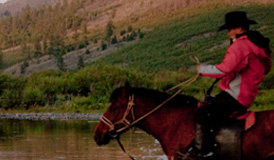 CISA3 researchers and IGERT-TEECH Trainees have privileged access to cultural landmarks in Florence, including our two primary sites: the Palazzo Vecchio, home to CISA3's ongoing search of the long-lost 'Battle of Anghiari' mural by Leonardo da Vinci; and the Palazzo Medici-Riccardi, long considered the birthplace of the Renaissance. Under a Memorandum of Understanding (MoU) with the Province of Florence, CISA3 is using multispectral imaging and analytical diagnostics to document and study various phases of renovations to the Palazzo Medici over nearly 600 years. IGERT-TEECH Trainees spend part of the summer in Florence working at the two sites. Under separate MoU's, the universities of Florence, Padua, and Calabria provide guest speakers as part of a parallel education component to the hands-on field research taking place at this field site. Now pending: plans for a permanent research center in the heart of Florence in collaboration with the Region of Tuscany, expected to open later in 2012.
[more]
CISA3 researchers and IGERT-TEECH Trainees have privileged access to cultural landmarks in Florence, including our two primary sites: the Palazzo Vecchio, home to CISA3's ongoing search of the long-lost 'Battle of Anghiari' mural by Leonardo da Vinci; and the Palazzo Medici-Riccardi, long considered the birthplace of the Renaissance. Under a Memorandum of Understanding (MoU) with the Province of Florence, CISA3 is using multispectral imaging and analytical diagnostics to document and study various phases of renovations to the Palazzo Medici over nearly 600 years. IGERT-TEECH Trainees spend part of the summer in Florence working at the two sites. Under separate MoU's, the universities of Florence, Padua, and Calabria provide guest speakers as part of a parallel education component to the hands-on field research taking place at this field site. Now pending: plans for a permanent research center in the heart of Florence in collaboration with the Region of Tuscany, expected to open later in 2012.
[more]
 Faynan is a region in southern Jordan where UCSD archaeologists have spent more than a decade excavating the largest copper mining and manufacturing center in the eastern Mediterranean, dating it up to 3,000 years old. Starting in September 2011, IGERT-TEECH Trainees excavate new sites while learning 21st-century cyber-archaeology techniques, with support from the year-round UCSD CISA3 Jordan Cyber-Archaeology Lab in the town of Shobak near the Faynan dig site. Trainees learn how to tag artifacts with GIS coordinates, scan, analyze and create computer models while using field cyberinfrastructure to support a variety of types of data including 3D scans and remote sensing data.
Faynan is a region in southern Jordan where UCSD archaeologists have spent more than a decade excavating the largest copper mining and manufacturing center in the eastern Mediterranean, dating it up to 3,000 years old. Starting in September 2011, IGERT-TEECH Trainees excavate new sites while learning 21st-century cyber-archaeology techniques, with support from the year-round UCSD CISA3 Jordan Cyber-Archaeology Lab in the town of Shobak near the Faynan dig site. Trainees learn how to tag artifacts with GIS coordinates, scan, analyze and create computer models while using field cyberinfrastructure to support a variety of types of data including 3D scans and remote sensing data.
[more]
 The 600,000 square miles that make up modern-day Mongolia have become a field site for the Valley of the Khans project, led by UCSD research scientist Albert Yu-Min Lin. It started as a search for the lost burial site of Genghis Khan, but it has now become something bigger – an effort to demonstrate that noninvasive, nondestructive technologies can help Mongolia locate and protect lost heritage sites and artifacts without ever digging them up. With National Geographic, the project has added a fresh dimension to ground expeditions by developing a crowdsourcing online game under which more than 10,000 armchair archaeologists have tagged satellite maps that may hold clues to future archaeological finds in Mongolia.
The 600,000 square miles that make up modern-day Mongolia have become a field site for the Valley of the Khans project, led by UCSD research scientist Albert Yu-Min Lin. It started as a search for the lost burial site of Genghis Khan, but it has now become something bigger – an effort to demonstrate that noninvasive, nondestructive technologies can help Mongolia locate and protect lost heritage sites and artifacts without ever digging them up. With National Geographic, the project has added a fresh dimension to ground expeditions by developing a crowdsourcing online game under which more than 10,000 armchair archaeologists have tagged satellite maps that may hold clues to future archaeological finds in Mongolia.
[more]